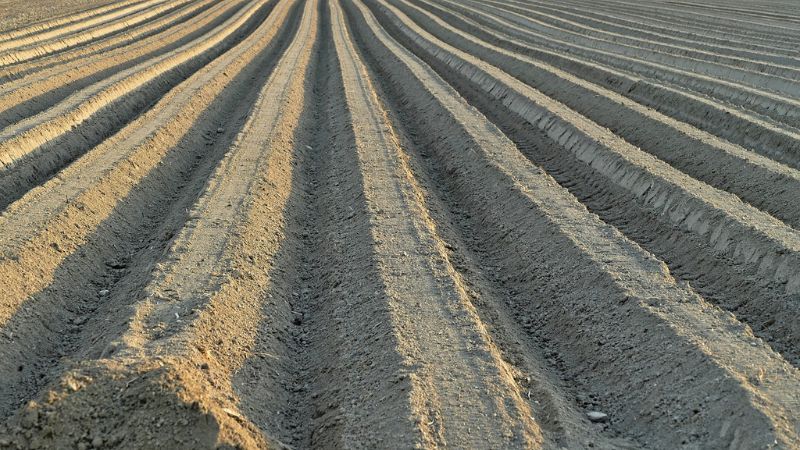What Are The Best Practices For Soil Preparation And Crop Rotation? Explained

Soil preparation is a crucial aspect of agriculture as it determines the growth and yield of crops. It is a process of improving the physical, chemical and biological characteristics of the soil to make it more fertile and conducive for crop growth. Good soil preparation practices can lead to healthier plants, higher yields and better-quality crops. Crop rotation is another important aspect of sustainable agriculture that helps maintain soil fertility and prevent the buildup of pests and diseases. It involves systematically planting different crops in a specific order, on the same field, in consecutive growing seasons. This helps to break pest and disease cycles, conserve soil moisture and improve soil fertility.
Both soil preparation and crop rotation are interrelated and complement each other to promote a healthy and sustainable agricultural system. Proper soil preparation provides the foundation for crop growth, while crop rotation helps maintain soil fertility and biodiversity. Understanding the best practices for soil preparation and crop rotation is essential to achieve optimal results. The ideal combination of these practices can reduce synthetic fertilizers and pesticides, improve soil health, conserve biodiversity and increase the overall productivity of the agricultural system.
The Best Practices For Soil Preparation
Soil preparation is an important aspect of agriculture that lays the foundation for the growth and productivity of crops. It involves a series of activities aimed at improving the physical, chemical and biological characteristics of the soil to make it more conducive for crop growth. The best practices for soil preparation aim to create a soil structure that is well-drained, aerated, has good moisture retention capacity, and a favorable pH for plant growth. We will now explore the best practices for soil preparation in detail, including:
Tillage Practices
Tillage refers to the process of preparing the soil for planting by breaking up and mixing the soil. There are different types of tillage practices, such as conventional tillage, reduced tillage and no-tillage. The choice of the tillage method depends on factors such as soil type, climate, crop type, and equipment availability.
Soil Amendment
Soil amendment involves adding organic or inorganic materials to the soil to improve its fertility, structure and water-holding capacity. Common soil amendments include compost, animal, green manure, rock minerals, and chemical fertilizers. The choice of amendment depends on the current soil nutrient levels, crop requirements and the long-term goals for soil improvement.
pH Adjustment
The pH of the soil plays an important role in plant growth and nutrient availability. A soil pH that is too high or too low can affect the availability of essential plant nutrients. Lime is commonly used to adjust the soil pH to a suitable level for the crop being grown.
Soil Testing
Soil testing analyzes soil samples to determine their nutrient and pH levels and other properties. Soil testing is important to determine the current status of the soil and to make informed decisions on soil preparation and fertilization. Regular soil testing helps to ensure that the soil remains fertile and productive over the long term.
The Best Practices For Crop Rotation
Crop rotation is a key component of sustainable agriculture and involves systematically planting different crops in a specific order, on the same field, in consecutive growing seasons. The main objective of crop rotation is to maintain soil fertility, prevent the buildup of pests and diseases, and conserve soil moisture. Crop rotation helps to improve soil health, reduces the need for synthetic fertilizers and pesticides, and increases overall productivity. We will now show you the best practices for crop rotation in detail, including:
Planning a Crop Rotation
The first step in implementing a successful crop rotation is to plan the growing crop sequence. This requires understanding the soil, climate, and requirements of the different crops being considered. A well-planned crop rotation should aim to optimize soil fertility, pest management, and water conservation.
Selecting Crops for Rotation
When selecting crops for rotation, it is important to consider factors such as the length of the growing season, the soil and nutrient requirements, and its potential impact on the soil. Some crops, such as legumes, can fix atmospheric nitrogen and add organic matter to the soil, while others, such as root crops, can improve soil structure.
Rotating Crops According to Their Needs and Benefits
To maximize the benefits of crop rotation, it is important to rotate crops according to their needs and benefits. For example, crops with similar nutrient requirements should not be grown in succession as this can lead to soil depletion and reduced yields. Similarly, rotating crops with different root structures can help to improve soil structure and fertility.
Using Cover Crops
Cover crops are grown between main crops to improve soil fertility, suppress weeds and reduce soil erosion. They are an important component of a crop rotation system as they help to conserve soil moisture, add organic matter to the soil and improve soil health. Some common cover crops include clover, rye, and hairy vetch.
Types of soil tillage
Several soil tillage can be used to prepare the soil for planting crops. Some of the most commonly used types of soil tillage include:
Conventional Tillage
Conventional tillage involves deep plowing or discing of the soil to create a fine seedbed. This method is often used in conventional agriculture and can help to incorporate organic matter, control weeds and create well-drained soil. However, conventional tillage can also lead to soil erosion and compaction and may not be suitable for all types of soils.
Reduced Tillage
Reduced tillage is a type of soil preparation involving less intensive practices than conventional tillage. This may include shallow plowing or disk harrowing and is used to control weeds and create a seedbed for planting. Reduced tillage can help to conserve soil moisture, reduce soil erosion, and improve soil structure.
No-Tillage
No-tillage is a soil preparation method that involves minimal or no soil disturbance. Instead of plowing or disking the soil, crops are planted directly into the existing soil. This method can help to reduce soil erosion, conserve soil moisture, and improve soil structure and fertility over the long term.
Strip Tillage
Strip tillage is reduced tillage that involves creating narrow strips of tilled soil within the field. This method can help conserve soil moisture, reduce erosion, and improve soil fertility. Strip tillage is often used with no-tillage methods to improve soil preparation and plant establishment.
Zone Tillage
Zone tillage is a reduced tillage that involves tilling only specific field areas, such as the planting zones or row middles. This method can help conserve soil moisture, reduce erosion, and improve soil fertility while reducing tillage-related inputs and fuel costs.
Types of crop rotation
Crop rotation is the practice of planting different crops in a specific order in the same field in consecutive growing seasons. There are several types of crop rotation, each with its objectives and benefits. Some of the most common types of crop rotation include:
Traditional Crop Rotation
Traditional crop rotation is a simple method of rotating crops typically grown in the same region. This may include rotating cereals with legumes or root crops with leafy vegetables. Traditional crop rotations aim to conserve soil fertility, improve soil structure and reduce pest and disease problems.
Three-Year Crop Rotation
The three-year crop rotation is a common method that involves dividing the field into three sections and rotating crops through each section every three years. This method can help improve soil fertility and reduce pest and disease problems while conserving soil moisture.
Four-Year Crop Rotation
The four-year crop rotation is a more complex method that involves dividing the field into four sections and rotating crops through each section every four years. This method can help improve soil fertility and reduce pest and disease problems while conserving soil moisture.
Intercropping
Intercropping is a crop rotation method in which two or more crops are grown in the same field simultaneously. This method can help improve soil fertility and reduce pest and disease problems while conserving soil moisture. Intercropping is often used with traditional crop rotations or other forms of crop rotation.
Cover Crop Rotation
Cover crop rotation is a crop rotation method in which cover crops are grown between main crops to improve soil fertility, suppress weeds, and reduce soil erosion. This method can help to conserve soil moisture, add organic matter to the soil, and improve soil health. Some common cover crops include clover, rye, and hairy vetch.
Implementing Soil Preparation and Crop Rotation Best Practices
Implementing best practices in soil preparation and crop rotation requires careful planning and consideration of various factors. The first step in implementing these practices is to assess the current state of your soil and crops. This may involve testing the soil to determine its composition and fertility levels and monitoring crop performance and health.
Once you clearly understand your soil and crops, you can begin to plan your soil preparation and crop rotation strategy. This may involve selecting appropriate tillage methods, determining the best crops to grow in your region, and developing a rotation schedule that maximizes the benefits of crop rotation. In addition, it is important to take steps to reduce soil erosion and compaction and manage pests and diseases through integrated pest management (IPM) practices.
Tools such as soil moisture sensors and crop management software can help you monitor soil health and crop performance and make informed decisions about your soil preparation and crop rotation practices. Overall, the key to success in implementing best practices in soil preparation and crop rotation is to be proactive, adaptable, and to monitor and improve your practices over time continually.

